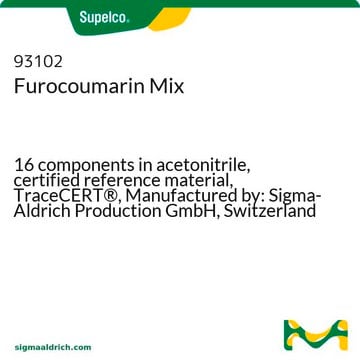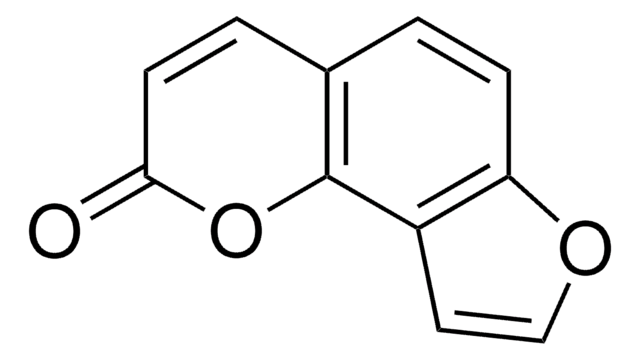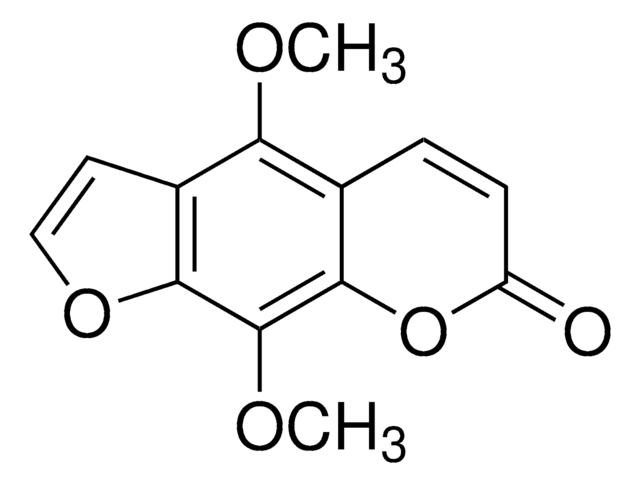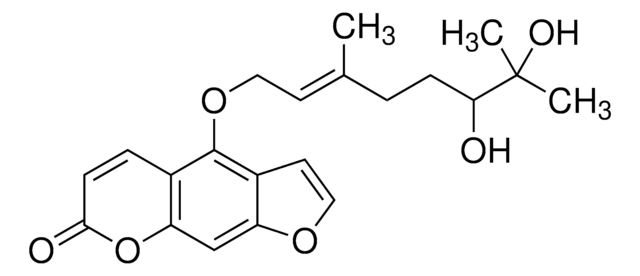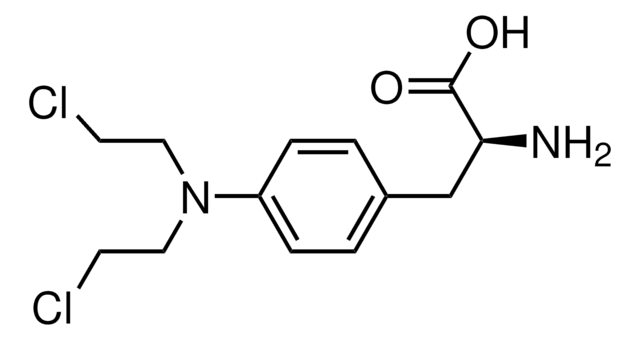A0956
Angelicin
Synonym(s):
2-Oxo-(2H)-furo(2,3-h)-1-benzopyran, 2H-Furo[2,3-h]-1-benzopyran-2-one, Isopsoralen, NSC 404563
About This Item
Recommended Products
form
powder
Quality Level
storage temp.
2-8°C
SMILES string
O=C1Oc2c(C=C1)ccc3occc23
InChI
1S/C11H6O3/c12-10-4-2-7-1-3-9-8(5-6-13-9)11(7)14-10/h1-6H
InChI key
XDROKJSWHURZGO-UHFFFAOYSA-N
Looking for similar products? Visit Product Comparison Guide
Related Categories
Application
Biochem/physiol Actions
Signal Word
Warning
Hazard Statements
Precautionary Statements
Hazard Classifications
Acute Tox. 4 Oral - Eye Irrit. 2 - Skin Irrit. 2 - STOT SE 3
Target Organs
Respiratory system
Storage Class Code
11 - Combustible Solids
WGK
WGK 3
Flash Point(F)
Not applicable
Flash Point(C)
Not applicable
Personal Protective Equipment
Certificates of Analysis (COA)
Search for Certificates of Analysis (COA) by entering the products Lot/Batch Number. Lot and Batch Numbers can be found on a product’s label following the words ‘Lot’ or ‘Batch’.
Already Own This Product?
Find documentation for the products that you have recently purchased in the Document Library.
Customers Also Viewed
Articles
DNA damage and repair mechanism is vital for maintaining DNA integrity. Damage to cellular DNA is involved in mutagenesis, the development of cancer among others.
Our team of scientists has experience in all areas of research including Life Science, Material Science, Chemical Synthesis, Chromatography, Analytical and many others.
Contact Technical Service
